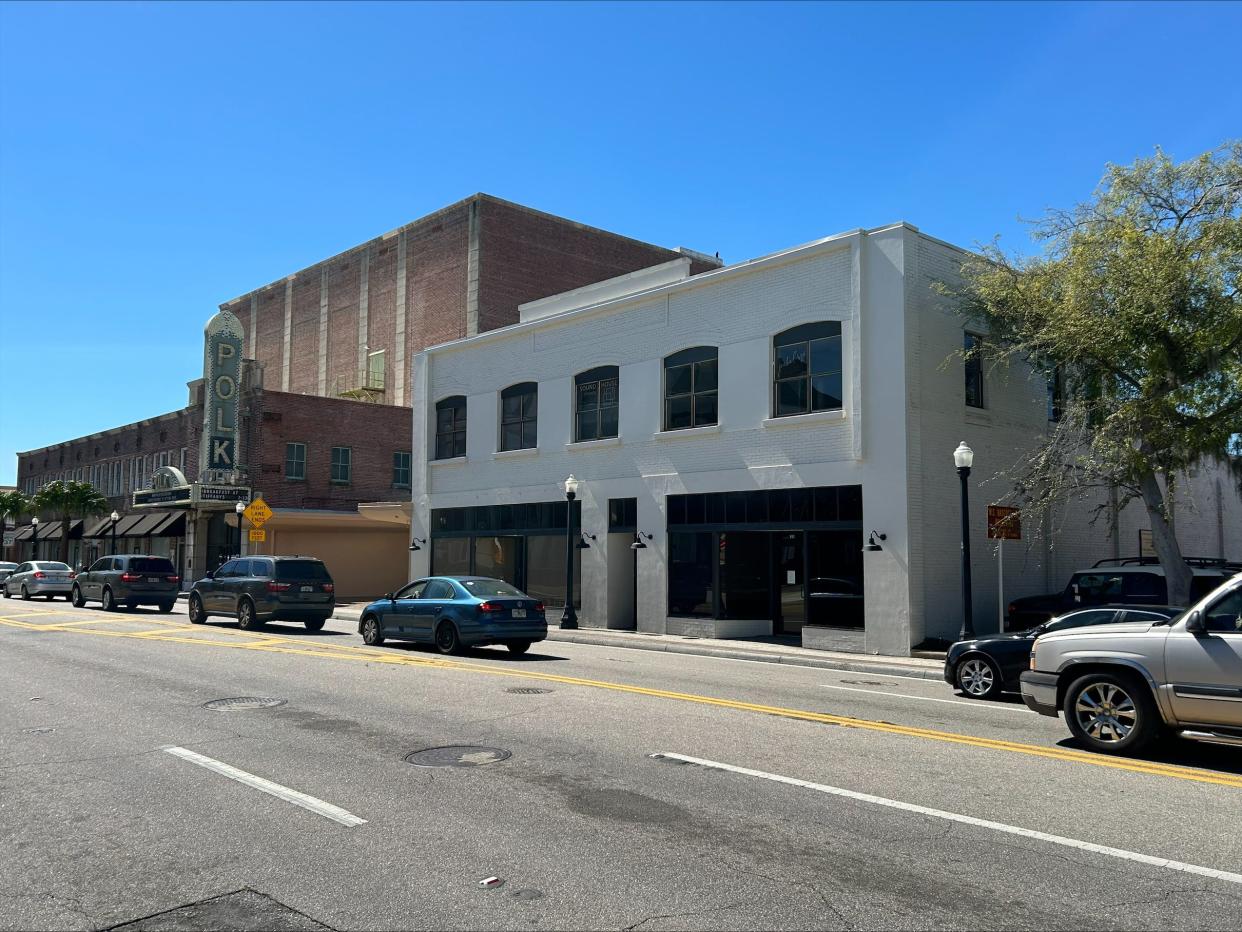Whitewashing history? Future look of Downtown Lakeland historic building in dispute

LAKELAND — One of Lakeland's prominent downtown historic buildings has been whitewashed, causing city staff to wonder whether it's possible to turn back time without causing more damage.
Lakeland's Historic Preservation Board's Design Review Committee faces the difficult task of determining whether several layers of white paint can be removed from the brick facade of 111. S. Florida Ave., known as the W. Fisk Johnson building.
"There was never any malicious intent to paint under the cover of darkness," Zach Miller, a tenant of the building, said. "How do we do the best possible job to restore the building on the outside and make it aesthetically pleasing? Our intent was never to just go paint a building but to do it in the right way from the beginning. We thought were talking all appropriate steps."
The W. Fisk Johnson building is a two-story commercial building that is just a few dozen feet north of the historic Polk Theatre. It was built in 1921, according to Emily Foster, Lakeland's senior planner who oversees historic preservation in a masonry vernacular architectural style. The building contributes to the city's Munn Park Historic District.
Last year, Miller applied to the city for permits to do an extensive interior renovation of the building, including new mechanical systems, flooring, walls and more, Foster said. City staff approved the interior renovations with the only exterior work to be replacement of the back door.
"We renovated this building inside and out. We took it down to the studs and brought everything back up to what would be known as today's code," Miller said.About July, Miller had the all sides of the building painted white starting with a white primer followed by two coats of a high-performance acrylic paint. This included the original natural brick on the second-story front brick facade of the building.
"Staff find that painting the unpainted, natural brick on the front facade of the subject building to be inconsistent with the [city's] standards and design guidelines, as well as adversely affect the historic character of the building," Foster read from city staff's recommendation.
On Jan. 25, the Design Review Committee voted unanimously to request Miller to use a non-abrasive method to remove the white paint from the front of the building, restoring it to its prior condition. Suggestions included using an alkaline or organic solvent.
"We get a lot of 'ask forgiveness, not permission,'" MeLynda Rinker said at the January meeting.
Miller appealed the board's decision this month, asking city staff to reconsider their request to strip the white paint off.
"I'm very confident we can get the paint back off, and I'm very confident it will damage the brick underneath," he said.
Miller said he's brought in several contractors who state that, because of the primer used, Sherwin-Williams Loxon primer, it's designed to fill in cracks and pores in the brick.
"It's not designed to come off, it's designed to preserve that building," he said.
The contractors have stated they believe power washing, sand blasting or abrasive wheels would be needed to remove all of the paint.
Board member Bruce Anderson asked Miller whether he could provide the board and city staff with documentation from the different contractors he spoke with what they think it would take to get the paint off the front brick facade.
"We need to see how much damages we are talking about before we make a call, " board member Natalie Oldenkamp said. "If it's a little bit of damage that might be repairable, it's a call we might be willing to make. If we are talking about losing 50% to 60% of the brick, that's a different matter."
Miller urged the board that several sections of the brick work on the original building were in poor condition to start.
"The brick is falling apart," he said. "It turns to dust and is crumbling in some areas ... that front area is no different."
Anderson asked Foster whether city staff can do some of its own investigation and possible testing to see how easily, or not, the white paint can be removed from bricks along the side of the building. That way, any damage done would be less visible and if it needs to be repainted white, it could be more easily done.
Foster said the brick along the side and rear of building may be different — as there are six different types of bricks on various walls of the historic building.
For now, the whitewash of the historic building will remain as city staff and experts decide whether it's possible to remove it without doing further significant damage.
Sara-Megan Walsh can be reached at swalsh@theledger.com or 863-802-7545. Follow on X @SaraWalshFl.
This article originally appeared on The Ledger: Whitewashing history? Paint on 1921 Lakeland building draws city ire

